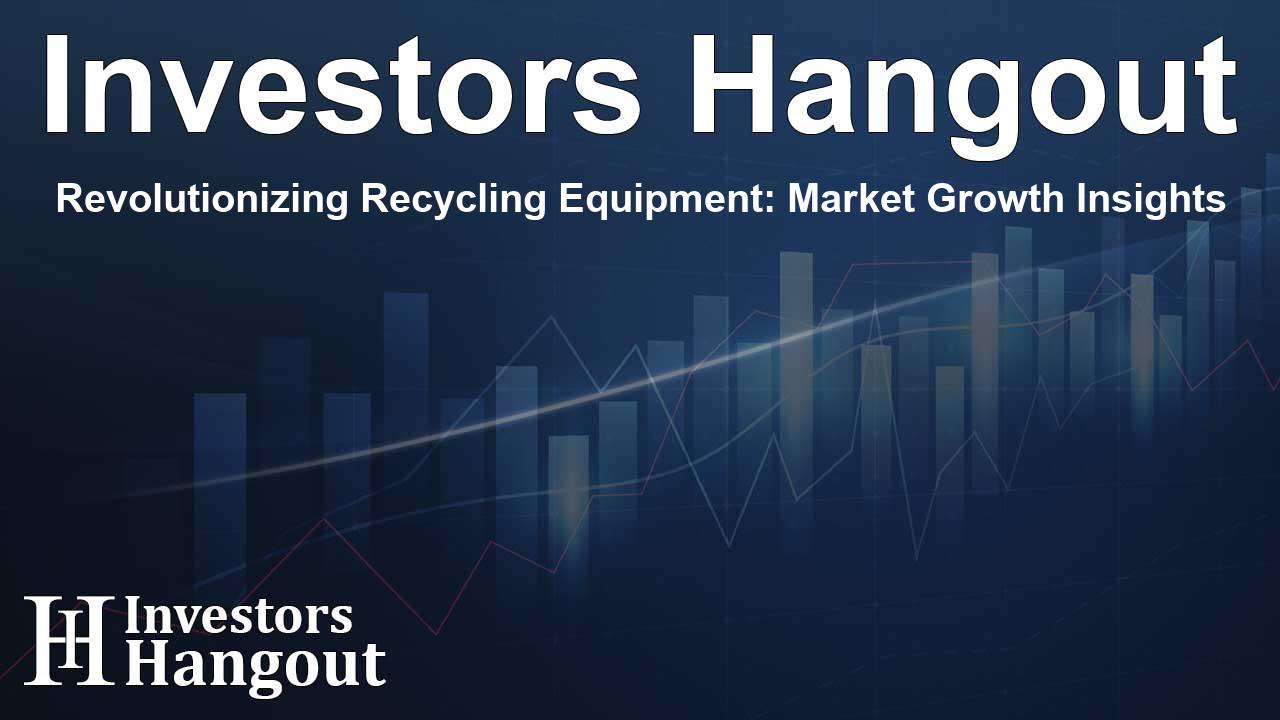Revolutionizing Recycling Equipment: Market Growth Insights

The Growing Recycling Equipment Market
The Recycling Equipment Market is on a remarkable trajectory, with expectations to soar from USD 29.46 billion in 2023 to USD 48.07 billion by 2032. This promising growth reflects a compound annual growth rate (CAGR) of 5.59% between 2024 and 2032. A global awakening to environmental issues is driving industries and governments alike to seek greener, more sustainable waste management solutions. Enhanced by technology, modern recycling equipment is becoming adept at handling a broad array of waste streams, making it more efficient and effective than ever before.
Market Trends and Projections
One of the most notable trends is the significant expansion projected for the U.S. Recycling Equipment Market, poised to grow from USD 17.55 billion in 2023 to USD 38.49 billion by 2032. This rapid increase, characterized by a staggering CAGR of 9.12%, underscores the soaring demand for advanced recycling solutions amid a heightened societal commitment to sustainability. Over the next decade, substantial investments in green energy initiatives are promised, indicating a comprehensive shift towards environmental responsibility.
Leading Players in Recycling Equipment
Several key players are at the forefront of the recycling equipment industry. Companies such as Recycling Equipment Manufacturing and The CP Group lead the charge, providing essential machinery like balers, shredders, and optical sorters. American Baler, Kiverco, and General Kinematics also contribute significantly, ensuring businesses have access to state-of-the-art recycling solutions tailored for various materials.
Market Dynamics and Influences
The driving forces behind this market's growth are deeply rooted in growing environmental concerns and a collective movement towards sustainability. Industries are recognizing advanced recycling equipment's crucial role in minimizing waste and preserving valuable resources. As technology progresses, machinery becomes increasingly capable of processing a wider variety of recyclables, enhancing the overall efficacy of recycling initiatives.
Dominant Segments in the Market
Baler presses, which compress recyclable materials into manageable bales, currently lead the market with over 32% share. Their efficiency not only facilitates easier handling and transportation but also significantly lowers logistics costs. In conjunction with the rising global demand for recycling, baler presses continue to underpin the industry's growth trajectory.
In a parallel trend, plastic recycling has emerged as the fastest-growing segment within the industry, commanding over 34% market share in 2023. The urging need to tackle plastic waste, driven by its environmental impact, is prompting both governmental and industrial efforts aimed at recycling this material more effectively. With increasing regulations and technological advancements, recycling plastics is becoming a priority in many regions.
Regional Insights: A Closer Look
In terms of regional market dynamics, the Asia-Pacific area is leading with over 40% market share in the recycling equipment sector. China's vigorous industrial growth and stringent waste management regulations contribute to this dominance. Conversely, North America is also showing impressive growth rates thanks to substantial investments in recycling infrastructure and a push for innovative, sustainable practices. Mexico, in particular, is anticipated to witness significant growth as regulatory frameworks evolve to encourage recycling and sustainable waste management.
Future Prospects and Innovation
The future of the recycling equipment market appears bright as organizations adjust their operations to align with evolving sustainability requirements. As nations transition towards circular economies, the push for effective material recovery and efficient recycling processes will fuel ongoing market expansion and technological innovation.
Frequently Asked Questions
What is the projected market size for recycling equipment by 2032?
The Recycling Equipment Market is expected to reach USD 48.07 billion by 2032.
What is the CAGR of the recycling equipment market?
The estimated CAGR for the recycling equipment market is 5.59% from 2024 to 2032.
Which segment dominates the recycling equipment market?
Baler presses currently dominate the market, accounting for more than 32% of the share.
Why is plastic recycling increasingly important?
Growing environmental awareness regarding plastic waste's impact on ecosystems is driving the demand for plastic recycling solutions.
Which region holds the largest share in the recycling equipment market?
The Asia-Pacific region leads with over 40% share in the recycling equipment market, largely driven by industrial growth and stringent regulations.
About The Author
Contact Thomas Cooper privately here. Or send an email with ATTN: Thomas Cooper as the subject to contact@investorshangout.com.
About Investors Hangout
Investors Hangout is a leading online stock forum for financial discussion and learning, offering a wide range of free tools and resources. It draws in traders of all levels, who exchange market knowledge, investigate trading tactics, and keep an eye on industry developments in real time. Featuring financial articles, stock message boards, quotes, charts, company profiles, and live news updates. Through cooperative learning and a wealth of informational resources, it helps users from novices creating their first portfolios to experts honing their techniques. Join Investors Hangout today: https://investorshangout.com/
The content of this article is based on factual, publicly available information and does not represent legal, financial, or investment advice. Investors Hangout does not offer financial advice, and the author is not a licensed financial advisor. Consult a qualified advisor before making any financial or investment decisions based on this article. This article should not be considered advice to purchase, sell, or hold any securities or other investments. If any of the material provided here is inaccurate, please contact us for corrections.
